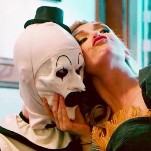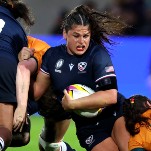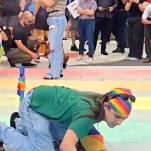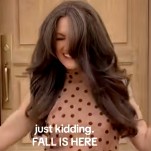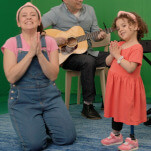How an Untrendy Partner Dance Made Me Less of a Jerk
LatestI am not someone who will dance in public, unless that dance is the Sarcastic Robot (that’s when you do the Robot but make a goofy face at someone while doing it so they know you’re not serious), mostly because “dancing” to most people between the ages of 18 and 35, means going to a club and gyrating until some stranger comes up behind you and tries to mate with your belt loops. At my most spirited, I’ve been known to jump straight up and down and yell the lyrics of the song to my closest friend. If I’m throw-up-level drunk, I might try to do something rhythmic. My history of not-dancing combined with my neuroses with respect to touching strangers or giving people the wrong idea, romantically, would not have made me a good candidate to take a partner dancing class. But I did, and I’m glad I did. I think it made me better at paying attention to what other people are doing, and ultimately, it made me more cognizant of nonverbal communication, and it may have even made me a little nicer.
I registered for the class because a partner in crime had purchased a Groupon for it and asked me to attend with him. Fine, I said, because I couldn’t, at that very second, think of an excuse not to go and I’m not very good at lying.
It was a swing dancing class (cue the jokes about how I would have been really cool in 1994/ did I go with a thinner, more attractive Vince Vaughn?, etc), and it met once a week for a month. On the last night, they explained on the first night of class, we were all going to go out dancing together! Won’t that be fun? My stomach turned itself in a knot. This class full of strangers was one thing, but going out in public? To a dance floor? To meet more, drunker strangers who know more about this particular sort of dancing than I did? My flight reflex swelled.
Ultimately, I saw the class through, and I’m glad I did. As the weeks went on, I got to be friendly with most of the other members of the class, and, unlike ever other dance situation I’d experienced, no one got the wrong idea. We got together, we danced, we thanked each other, we parted ways. No funny business! No negging and weird pick up artistry and conflation between wanting to dance and wanting to screw. This kind of dancing wasn’t like the type I was used to seeing on the vodka and ecstasy-soaked dance floors of the bars and clubs I’d been to; there was a politeness to it. A set of rules. A civil conversation.
-

-

-

-

-

-

-

-

-

-

-

-

-

-

-

-

-

-

-

-

-

-

-

-

-

-

-

-

-

-

-

-

-

-

-

-

-

-

-

-

